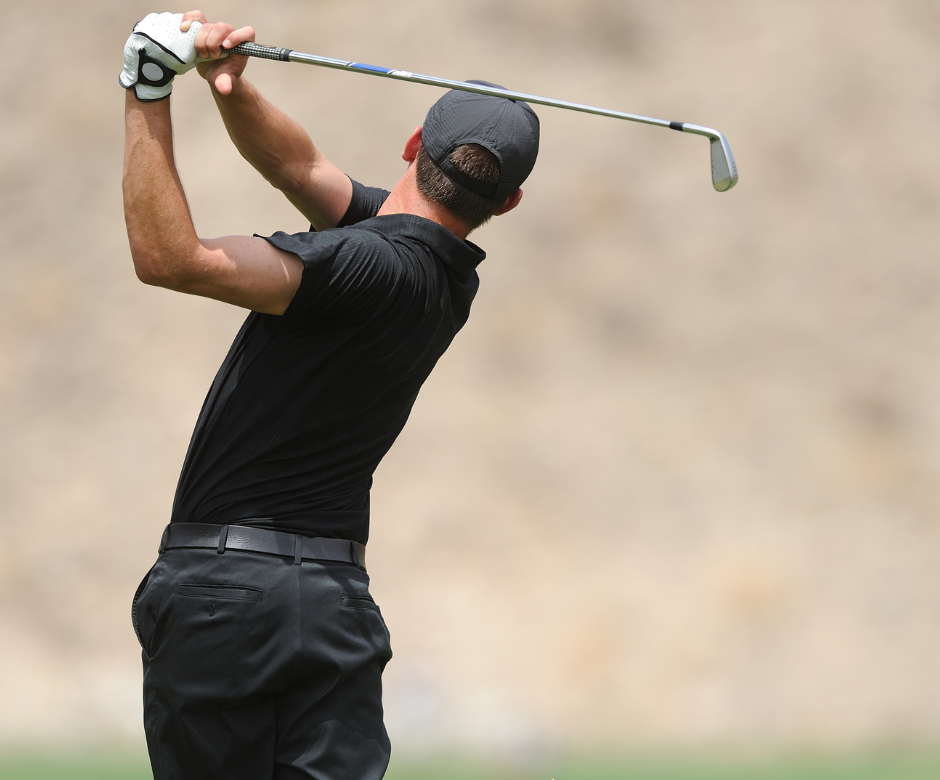Don’t Miss A Tee-Off
Golf is an activity that has been enjoyed by many for a very long time. Although it can be played at varying levels of intensity, golf is still a sport, and the physical demands to perform this sport can still lead to injuries. One such injury that is common in golf is an injury to the elbow otherwise known as Golfer’s Elbow. In this blog, I will describe the injury itself, its common causes, and how Physical Therapy can be a great resource for those dealing with it. Don’t miss a tee-off due to elbow pain this season.
The Elbow
The human body is made up of many bones and joints and one very important joint is the human elbow. Made up of three bones, multiple ligaments, and various muscle tissue the elbow is susceptible to multiple different injuries. One such injury is medial epicondylitis is also known as Golfer’s Elbow.
To define what medial epicondylitis is we can break down the pieces of the word and it will illustrate the exact nature of the injury. The term epicondyle refers to the rounded bony end of the elbow. The term medial refers to the inside or more midline aspect of a body part and the suffix “-itis” means inflammation. Simply put, Golfer’s Elbow is the injury process of excessive strain and/or inflammation of the inside of the elbow. The tissues involved are often the tendons of the forearm muscles (tendinitis) as well as irritation of the actual bone itself that the tendons attach to. Any combination of the tendons, bone, or all the above becomes inflamed creating a problem for whoever is experiencing it.
Golfer’s Elbow
This injury can present with many symptoms with the most common being pain on the inside of the elbow. Along with pain, the elbow can present with stiffness, achiness, weakness of grip, swelling with tenderness even to touch and at times the person can experience numbness or tingling locally or into the forearm, wrist, and hand.
Medial Epicondylitis is an injury that is caused by either significant acute trauma or more commonly by repetitive excessive strain. Although this injury is not exclusive to golf, the nature of the sport makes this a relatively common injury in the trailing arm of a golfer. One common reason that golfers experience this injury so often is that they have weakness or lack of stamina in their forearm musculature, and they cannot tolerate the repeated stress well. And although this is very true and can happen in isolation, an often understated or unrecognized source of the injury is the involvement of improper biomechanics in the entire arm or upper extremity that ultimately leads to the eventual breakdown of the tissue. Inefficient force production or acceptance in the arm is a very common reason that the tissues of the elbow eventually fail and inflame.
Rehabbing the Elbow
So, what should one do if they are experiencing this type of pain or injury? In severe cases, this injury can require injections or surgery but much more commonly it is treated conservatively. This conservative care often includes temporary rest from the repetitive task, the use of ice and NSAIDs as needed, and rehab. That’s where physical therapy comes in. As experts in the musculoskeletal system and biomechanics, therapists can effectively treat this type of injury both at the injury site as well as identifying and treating the source of the breakdown. A combination of stretching, properly prescribed therapeutic exercise, and various manual interventions and modality interventions have been proven to have positive outcomes when treating this injury.
Common Golfing Injury
Although this injury is not exclusive to golfers, its prevalence in the golf community should not be ignored. In these scenarios, it is best to seek out care from a physical therapist who is certified through the Titleist Performance Institute in the systematic assessment and treatment of golf-related injuries. This approach to rehabilitating patients with medial epicondylitis has had fantastic results. A TPI-certified specialist working with someone with Golfer’s Elbow will not only look at and treat the injury itself but also dive deeper into the biomechanics of the entire arm and body that may have been leading to the breakdown in the first place thus allowing you to return to your sport without concerns of reinjury or changing your playing schedule.
Hopefully, now you have learned a little bit more about Golfer’s Elbow and how to manage it. If you or someone you know have had this injury now, had it in the past, or are concerned about it being a problem in the future NOW is the time to seek out a physical therapist for help with treatment, management, or injury prevention.

